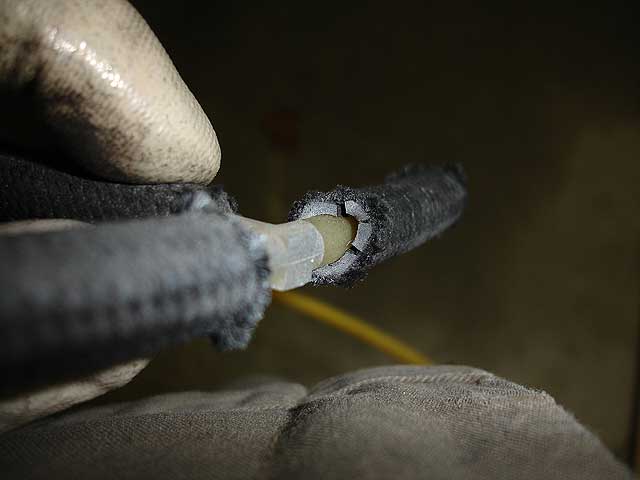Forgive me for being direct but if you are asking where vapor lock occurs, perhaps you are experiencing some other type of fuel starvation. And, since your post did not state
when the suspected vapor lock occurs, be it while driving or after the car has been sitting, I will guess it is the latter.
Vapor lock typically describes a situation where the liquid fuel has vaporized and thus presents an impediment to the normal fuel supply stream. This can occurs when the fuel is heated (usually by close proximity to a hot engine in hot weather). Marginal fuel supply can also be an indication of a weak or failing fuel pump. This can be exacerbated by restrictions in the fuel delivery system including a plugged in-line filter or the gauze in-tank pickup filter or even a kinked fuel line.
As noted, vapor lock is apt to occur in the presence of heat, so it can occur both before and aft of the fuel pump, usually confined to the engine bay. (Running fuel line near the exhaust could also create vapor, but this scenario seems far fetched here.) Much depends upon how your fuel line is routed, be it close to hot manifolds or even in the direct line of radiator exhaust. Before going further, it is also possible that the fuel in one or both of your carburetors fuel bowls is evaporating aka "boiling off" after the
hot car has been allowed to sit for a while. This unlikely scenario could occur if the float levels are too low, carb base "isolator" gaskets are too thin, engine operating temperatures are above normal, or you are using an exotic fuel blend that is more volatile than normal pump gas.
There are several things you can try to determine the source of the problem.
Establish your normal engine operating temperature when the problem occurs. Is the temp gauge in the red? If everything is cooking, that could include your fuel. There are several measures for reducing engine operating temperature that goes beyond the scope of this post.
Measure the fuel pressure before and after the pump, cold and hot - with a simple vacuum gauge. If the pressure is low (less than 2 ft lbs) you may just have a weak or failing pump. There are other ways to test the pump, with your finger over the inlet and outlet but for obvious reasons, I don't advise it.
Carefully examine your fuel lines for blockage. I am thinking of the inlet mesh filter that sits in the tank and any inline filters. At different stages you should be able to blow through the lines or use a small air pump to roughly gauge this.
Too much resistance can indicate the source or contributing source of your problem.
Try relocating the fuel line away from any obvious heat sources, or create heat barriers. You could insert commercially available fuel heat sinks. I have even seen aluminum foil used as a heat sink, but cannot attest to its effectiveness.
Although an electric pump could not hurt, considering you are feeding two carburettors, I have found it unnecessary on my carburetor-equipped cars, except for one occasion when the mechanical fuel pump failed - on the road (in Florida).
HTH




